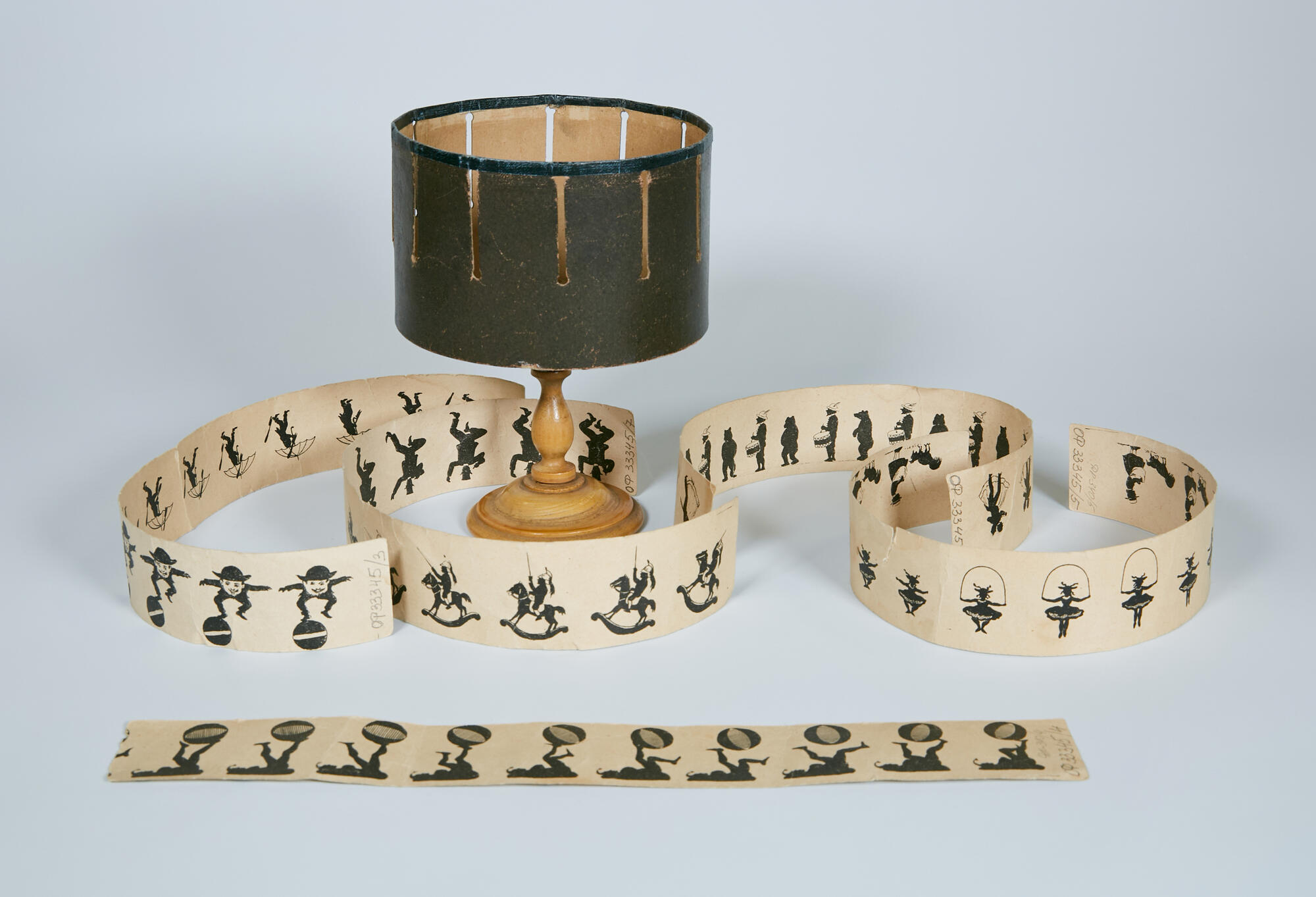The collection of the Moscow Museum exhibits a zoetrope — an optical device for displaying a sequence of drawings and creating the illusion of motion. Its design is based on persistence of human vision.
A similar device was invented in 1834 by the Englishman William George Horner. At first, it was not very popular, but that changed in the 1860s, and the invention patents were obtained simultaneously in Britain and America. It was the American inventor William Lincoln who named the device zoetrope. However, it is worth mentioning that the existence of such a device was recorded by the Chinese as early as 180 AD. The zoetrope is a modification of Joseph Plateau’s phenakistoscope.
The device consists of a cardboard cylinder, open at the top and placed on a stand with a rod that is used to rotate the cylinder. There are narrow vertical cuts in the upper part of the cylinder. Paper or cardboard strips with images are placed inside. When the cylinder is rotated, it creates the illusion of motion in static images: the faster it rotates, the smoother the motion is. The vertical cuts prevent the images from merging. The zoetrope technology makes images appear a bit slimmer than they actually are.
The device in the museum’s collection includes five paper strips with sketches made by the artist S. Mau. The strips feature images on both sides. They depict quite common scenes: a woman feeding a rooster and a chicken / a girl jumping rope; a waltzing couple / a man with a dancing bear; a man in a bowler hat jumping over a ball / a man running under an umbrella; a clown juggling a ball / a man juggling his head; a boy riding a toy horse / a dancing man in a top hat. If one were to imagine that the paper strip is infinite and the device is linear, one could easily see that the zoetrope is in some ways the predecessor of cinema, and that paper strips are the prototype of film.



